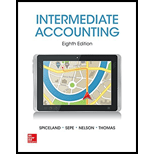
Concept explainers
IFRS: International Financial Reporting Standards is a set of accounting guidelines formulated by an independent non-profit organization known as International Accounting Standards Board. These guidelines provide the accounting knowledge to the investors and auditors as to how the accounting transactions should be reported in the financial statements.
U.S.GAAP: United States Generally Accepted Accounting Principles provides a framework of accounting rules for financial reporting in order to obtain uniformity. It contains the accounting concepts and principles required for proper presentation of financial statements.
Financial disclosures: Financial disclosures are the reports which provide financial information about the company to its investors for investment decision making.
To State: the method that the company uses to value its inventory and the other alternatives that are available under IFRS and under U.S. GAAP.
Want to see the full answer?
Check out a sample textbook solution
Chapter 8 Solutions
INTERMEDIATE ACCOUNTING W/CONNECT PLUS
- Could you help me solve this financial accounting question using appropriate calculation technical.arrow_forwardPlease provide the correct answer to this general accounting problem using accurate calculations.arrow_forwardPlease provide the solution to this general accounting question using proper accounting principles.arrow_forward
- Meagan Industries completes Job #843, which has a standard of 450 labor hours at a standard rate of $24.50 per hour. The job was completed in 420 hours, and the average actual labor rate was $25.20 per hour. What is the labor efficiency (quantity) variance?arrow_forwardSolve this Accounting Problemarrow_forwardHarmony Beverages produces a fruit juice blend using three ingredients: Apple, Orange, and Mango. The standard mix ratio is 50% Apple, 30% Orange, and 20% Mango. The standard cost per gallon is $2.00 for Apple, $3.50 for Orange, and $5.00 for Mango. Standard production calls for 100 gallons of ingredients to yield 95 gallons of finished juice due to waste. Last week, the company used 60 gallons of Apple, 25 gallons of Orange, and 20 gallons of Mango, which yielded 98 gallons of finished juice. Calculate the materials yield variance.arrow_forward
- Please provide the accurate answer to this general accounting problem using valid techniques.arrow_forwardThe monthly fee (in dollars) for a streaming service at Madison Entertainment is a linear function of the number of devices registered. The monthly fee for 3 devices is $19.95 and the monthly fee for 6 devices is $31.95. What is the monthly fee for 4 devices? solve this accounting problemarrow_forwardCan you solve this financial accounting question with the appropriate financial analysis techniques?arrow_forward

 AccountingAccountingISBN:9781337272094Author:WARREN, Carl S., Reeve, James M., Duchac, Jonathan E.Publisher:Cengage Learning,
AccountingAccountingISBN:9781337272094Author:WARREN, Carl S., Reeve, James M., Duchac, Jonathan E.Publisher:Cengage Learning, Accounting Information SystemsAccountingISBN:9781337619202Author:Hall, James A.Publisher:Cengage Learning,
Accounting Information SystemsAccountingISBN:9781337619202Author:Hall, James A.Publisher:Cengage Learning, Horngren's Cost Accounting: A Managerial Emphasis...AccountingISBN:9780134475585Author:Srikant M. Datar, Madhav V. RajanPublisher:PEARSON
Horngren's Cost Accounting: A Managerial Emphasis...AccountingISBN:9780134475585Author:Srikant M. Datar, Madhav V. RajanPublisher:PEARSON Intermediate AccountingAccountingISBN:9781259722660Author:J. David Spiceland, Mark W. Nelson, Wayne M ThomasPublisher:McGraw-Hill Education
Intermediate AccountingAccountingISBN:9781259722660Author:J. David Spiceland, Mark W. Nelson, Wayne M ThomasPublisher:McGraw-Hill Education Financial and Managerial AccountingAccountingISBN:9781259726705Author:John J Wild, Ken W. Shaw, Barbara Chiappetta Fundamental Accounting PrinciplesPublisher:McGraw-Hill Education
Financial and Managerial AccountingAccountingISBN:9781259726705Author:John J Wild, Ken W. Shaw, Barbara Chiappetta Fundamental Accounting PrinciplesPublisher:McGraw-Hill Education





